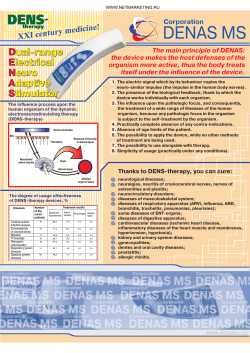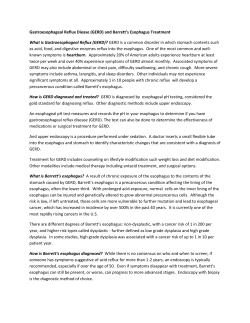
Content
• LECT 12: Anatomy of Mediastinum • Dr. Rehan • At the end of the session, the student • • • • should able to: Identify the divisions of the mediastinum and describe their contents. Describe the gross anatomy of bronchi. Describe the anatomy of nerves in the mediastinum. Correlate this knowledge to clinical conditions. • Mediastinum • Extends superiorly to the thoracic outlet and the root of the neck and inferiorly to the diaphragm. • Extends anteriorly to the sternum and posteriorly to the vertebral column. • Content: remains of the thymus, the heart and large blood vessels, the trachea and esophagus, the thoracic duct and lymph nodes, the vagus and phrenic nerves, and the sympathetic trunks. • Sub divisions • Divided in superior and inferior divisions by imaginary line passing from the sternal angle anteriorly to the lower border of the 4th thoracic vertebrae. • The inferior mediastinum is further subdivided into the middle mediastinum, which consists of the pericardium and heart, the anterior mediastinum, which is a space between the pericardium and the sternum and the posterior mediastinum, which lies between the pericardium and the vertebral column. • Superior mediastinum • The superior mediastinum is bounded in front by the manubrium sterni and behind by the first four thoracic vertebrae • Thymus, large veins, large arteries, trachea, esophagus and thoracic duct, and sympathetic trunks. • Inferior Mediastinum • The inferior mediastinum is bounded in front by the body of the sternum and behind by the lower eight thoracic vertebrae. • Thymus, heart within the pericardium with the phrenic nerves on each side, esophagus and thoracic duct, descending aorta, and sympathetic trunks. • The Bronchi • The trachea bifurcates behind the arch of the aorta into the right and left principal (primary or main) bronchi • The right principal (main) bronchus is • • • • • wider, shorter, and more vertical than the left and is about 1 in. (2.5 cm) long. Before entering the hilum of the right lung, the principal bronchus gives off the superior lobar bronchus. On entering the hilum, it divides into a middle and an inferior lobar bronchus. The left principal (main) bronchus is narrower, longer, and more horizontal than the right and is about 2 in. (5 cm) long. It passes to the left below the arch of the aorta and in front of the esophagus. On entering the hilum of the left lung, the principal bronchus divides into a superior and an inferior lobar bronchus. • Nerves in mediastinum • The right vagus nerve descends in • • • • • • • the thorax, first posterolateral to the brachiocephalic artery then lateral to the trachea Passes behind the root of the right lung and assists in the formation of the pulmonary plexus. On leaving the plexus, the vagus passes onto the posterior surface of the esophagus and takes part in the formation of the esophageal plexus. It then passes through the esophageal opening of the diaphragm. Nerves in mediastinum The left vagus nerve descends in the thorax between the left common carotid and the left subclavian arteries It then crosses the left side of the aortic arch The vagus then turns backward behind the root of the left lung and assists in the formation of the pulmonary plexus. • On leaving the plexus, the vagus passes onto the anterior surface of the esophagus and takes part in the formation of the esophageal plexus. • Nerves in mediastinum • The right phrenic nerve descends in the thorax along the right side of the right brachiocephalic vein and the superior vena cava . • It passes in front of the root of the right lung and runs along the right side of the pericardium, which separates the nerve from the right atrium. • It then descends on the right side of the inferior vena cava to t`he diaphragm. • Its terminal branches pass through the caval opening in the diaphragm to • • • • • supply the central part of the peritoneum on its under aspect. Nerves in mediastinum The left phrenic nerve descends in the thorax along the left side of the left subclavian artery. It crosses the left side of the aortic arch and here crosses the left side of the left vagus nerve. It passes in front of the root of the left lung and then descends over the left surface of the pericardium, which separates the nerve from the left ventricle. On reaching the diaphragm, the terminal branches pierce the muscle and supply the central part of the peritoneum on its under aspect. • Clinical correlations • Deflection of Mediastinum If air enters the pleural cavity (a condition called pneumothorax), the lung on that side immediately collapses and the mediastinum is displaced to the opposite side. patient’s being breathless and in a state of shock; on examination, the trachea and the heart are found to be displaced to the opposite side • Clinical correlations • Mediastinitis Deep infection of the neck spread readily into the thorax, producing a mediastinitis. Penetrating wounds of the chest involving the esophagus may produce a mediastinitis. • Clinical correlations • Mediastinal Tumors or Cysts Enlargement of mediastinal tumor may compress the left recurrent laryngeal nerve, producing paralysis of the left vocal fold. An expanding cyst or tumor can partially occlude the superior vena cava, causing severe congestion of the veins of the upper part of the body. Other pressure effects can be seen on the sympathetic trunks, phrenic nerves, and sometimes the trachea, main bronchi, and esophagus. • Clinical correlations • Mediastinoscopy diagnostic procedure by which tracheobronchial lymph nodes are obtained without opening the pleural cavities. A small incision is made in the midline in the neck just above the suprasternal notch, and the superior mediastinum is explored down to the region of the bifurcation of the trachea. The procedure can be used to determine the diagnosis and degree of spread of carcinoma of the bronchus. • • • • • • Summary Mediastinum: definition Extend and sub divisions Contents Nerves passing thorax Clinical correlations • References • Clinical anatomy by regions, 9th edition, Richard. Snells
© Copyright 2025









